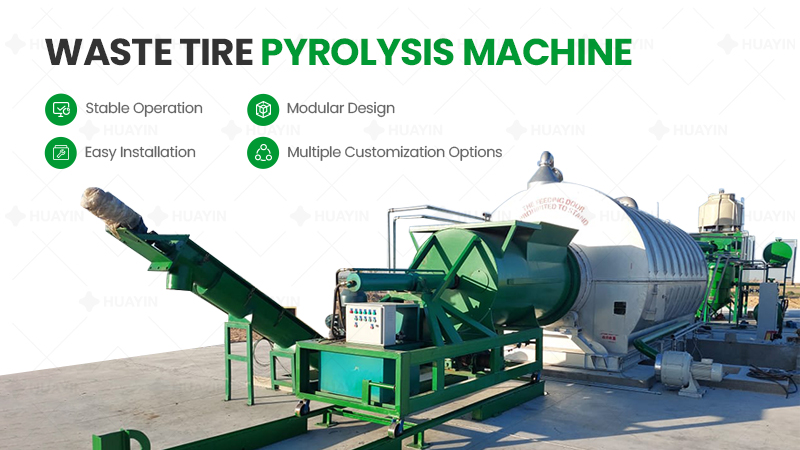The waste tire recycling technologies and methods are mainly four methods: prototype utilization, grinding (Scrap tires), auxiliary fuel (Tire derived fuel, TDF) and pyrolysis (Pyrolysis).
1.1 Prototype utilization
Although the “prototype utilization” of waste tires is not the final recycling, it can prolong the life cycle of waste tires and is currently the most direct and lowest-cost recycling method. Including as artificial fishing reefs, tunnel projects, wharf projects, agricultural (horticultural) purposes, recreational facilities, sand dam projects, etc., but the amount is limited, and it is necessary to consider whether its use will cause environmental problems.
The processing of “old tire retreading” is relatively simple, but the market demand is not high and it is a low-priced product, which is not easy to promote. Although, tire retreading is a method that has been established for many years, which can be equivalent to the use of new tires, and the cost is less than 1/4 of new tires. However, with the modernization of automobiles and transportation, the safety and handling requirements of tires at high speeds are becoming more and more stringent, and retreaded tires cannot achieve the same performance as new tires, so the market has gradually shrunk.
1.2 Crushing and grinding
After being “crushed” by machinery, waste tires can be used as raw materials for building materials and rubber products, including waste tires to be made into cement bricks, floor tiles or substitute products for related building materials. If it is further “milled” and the impurities such as steel wire and cotton wool in the waste tire are removed, it can be made into rubber powder, reclaimed rubber and other related rubber products with high purity of rubber components.

1.3 Auxiliary fuel
The calorific value of waste tires is over 8,000 kcal/kg, which is higher than that of coal-fired 5,000 kcal/kg, and the residual ash after combustion is also comparable to that of coal, so it is very suitable for industries that require high heat energy. TDF (Tire derived fuel – waste tire derived fuel) provides cement plants with kilns, power plants with steam-electricity cogeneration equipment, and paper mills with steam equipment as raw materials for energy generation.
1.4 Pyrolysis
The principle of pyrolysis is to place waste tires in an oxygen-deficient or inert gas for incomplete thermal degradation, which can produce liquid and gaseous hydrocarbons and carbon residues. In this technology, waste tires are firstly crushed into pieces and then sent to a pyrolysis reactor. After heating in the reactor, a thermal decomposition reaction occurs. Next, the gaseous products are passed into a condenser, whereby oil and gas are separated, and a fraction similar to diesel is condensed. The flammable gas is sent to the combustion furnace to provide a constant source of heat for the pyrolysis system. The solid product in the reactor is mainly carbon black. After magnetic separation, the coarse carbon black and the steel wire are separated, and the coarse carbon black is obtained by further processing. Commercially available carbon black.
The pyrolysis method to treat waste tires can realize the recovery of resources and the full reuse of valuable products. It is one of the important development directions of waste tire treatment in various countries, and it is also in line with national industrial policies and development plans.



